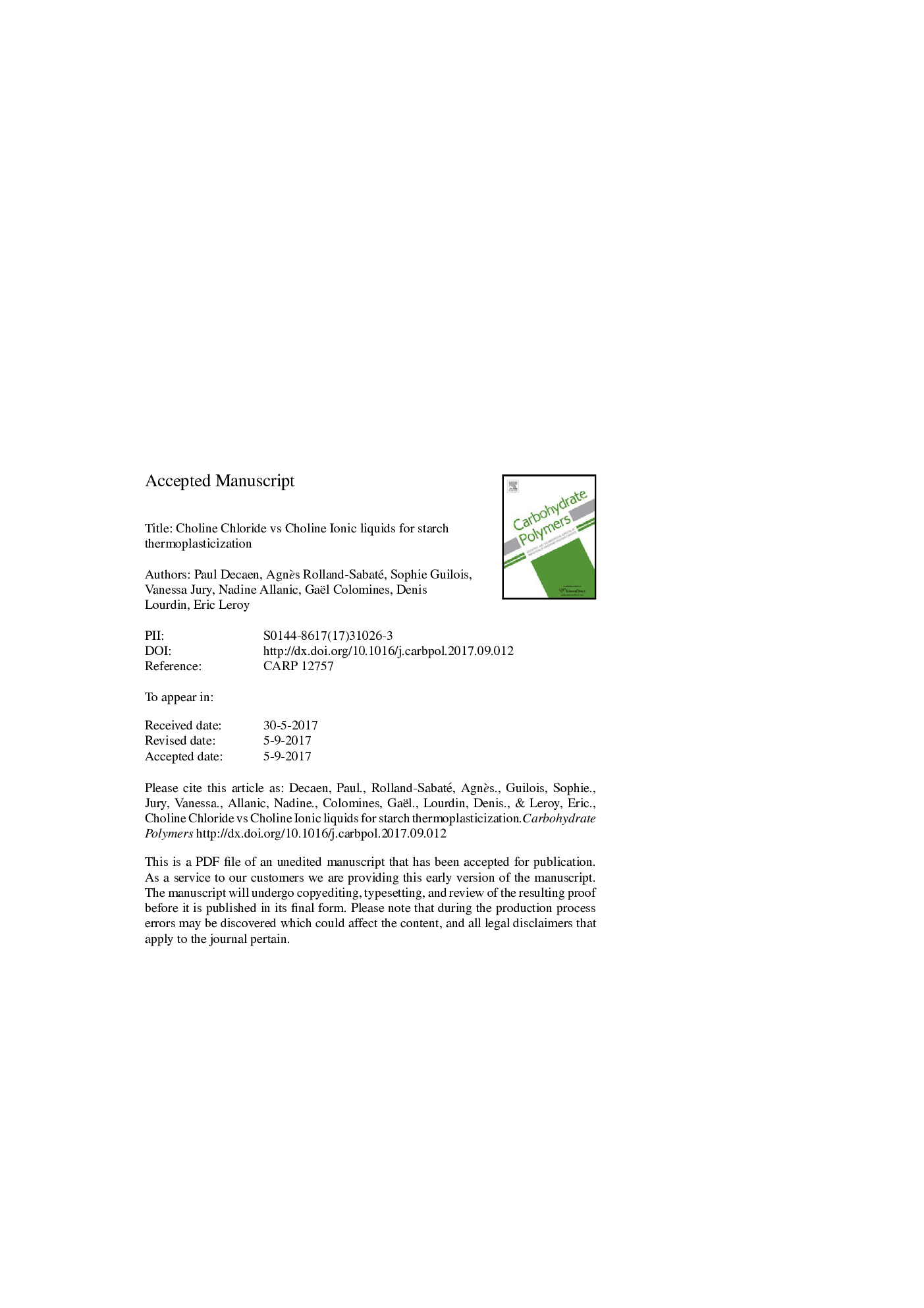| Article ID | Journal | Published Year | Pages | File Type |
|---|---|---|---|---|
| 5156522 | Carbohydrate Polymers | 2017 | 30 Pages |
Abstract
Native starch containing 12% water was melt processed in presence of 23% of various plasticizers at 120 °C, either by simple compression molding or by extrusion using a laboratory scale microcompounder. Glycerol, a typical starch plasticizer, was used as a reference and compared to three choline salts: raw choline chloride (which is a solid in dry state with a melting point above 300 °C), and two ionic liquids synthesized from this precursor (choline acetate and choline lactate, liquids below 100 °C). These ionic plasticizers were shown to allow a more efficient melting of native starch in both processes. The investigation of macromolecular structure changes during processing shows that this efficiency can be ascribed to a starch chain scission mechanism, resulting in lower specific mechanical energy input need for starch thermoplasticization compared to glycerol plasticized starch. Compared to the synthesized ionic liquids, raw commercial choline chloride leads to a good compromise between limited chain scission, and final water uptake and thermomechanical properties.
Related Topics
Physical Sciences and Engineering
Chemistry
Organic Chemistry
Authors
Paul Decaen, Agnès Rolland-Sabaté, Sophie Guilois, Vanessa Jury, Nadine Allanic, Gaël Colomines, Denis Lourdin, Eric Leroy,
